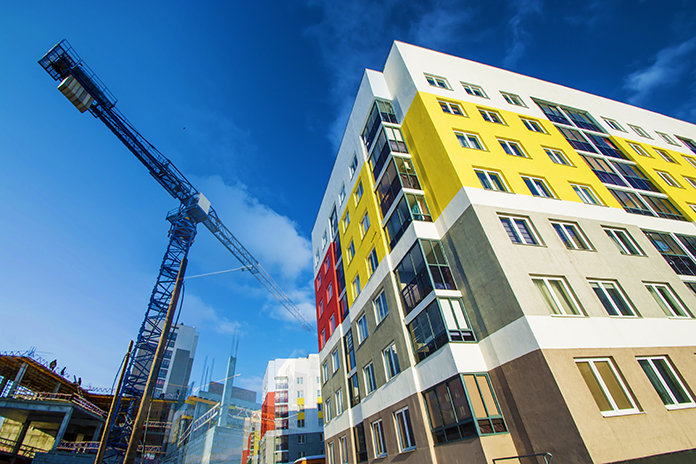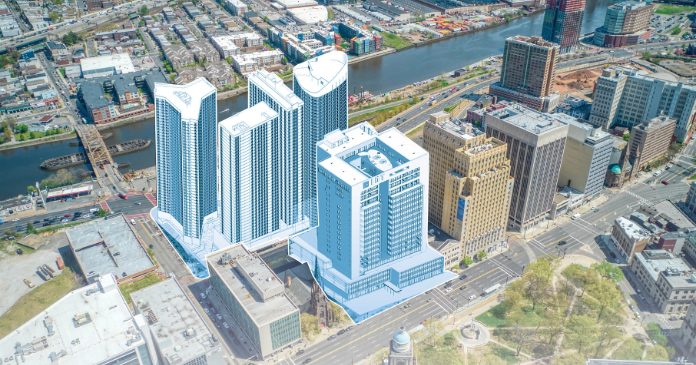It’s no secret that there is a nationwide housing crisis. According to the National Low Income Housing Council, “there is a shortage of more than 7 million affordable homes for our nation’s 10.8 million plus extremely low-income families.”
And that’s just one of many sobering statistics. It’s clear that there is a need to develop affordable housing across the nation.
While there isn’t a silver bullet to solve the crisis, I believe a solution that supports reducing per unit cost while also increasing generation of affordable units is a step in the right direction.
Understanding the LIHTC program
Affordable housing tax credits, issued through the Low-Income Housing Tax Credit (LIHTC) program, are instrumental for developers and partners looking to develop and preserve affordable housing nationwide. Qualified Action Plans (QAPs) outline housing priorities of the state and create the rules by which LIHTC applications are scored and credits are awarded. Examples of set-asides include geographic preferences, local housing market conditions, building characteristics (e.g., unit size) and type of project (e.g., new construction, rehabilitation), among others.
LIHTC remains an essential part of the housing crisis solution in the U.S. Since 1987, it has helped to place 3.55 million affordable housing units in service.
However, the guidelines and scoring mechanisms used to award tax credits for affordable housing projects have remained largely unchanged for decades—meaning that we are consistently evaluating (and funding) today’s affordable housing projects by 1986 standards.
At a high level, the goal of these guidelines is to promote the development of suitable, community-based affordable housing properties. But many of the guidelines are based on antiquated schemas and use cases that don’t factor in how people work, live, and interact with their community today.
As a result, the scoring guidelines in the QAPs have the unfortunate and unintended consequence of discouraging affordable development—usually by increasing the cost of the development until it becomes unattainable, even with LIHTC.
So, how do we increase affordable housing development while also maintaining a reasonable per unit cost? One key may be for affordable housing developers to take a critical and collaborative look at QAP scoring mechanisms to ensure that LIHTC is operating effectively and efficiently.
Based on my experience working in this sector, here are three scoring areas ripe for re-examination and collaboration among affordable housing stakeholders.
Unit sizing
Many current state QAPs require affordable housing units to be a certain size, with California’s most recent QAP requiring one-bedroom LIHTC units to be at least 450 sq. ft.
At the same time, we’re seeing the emergence of market rate micro-units (apartments between 140 and 350 sq.ft.) in urban cores as a solution to the need for more rental units in densely populated areas.
Cities like Seattle have incorporated thousands of micro-units in their downtown core housing supply, resulting in high occupancy and more affordable rent.
Downsizing the square footage requirement for affordable units to reflect trends in market rate units could enable developers to increase the density of affordable units within a property—making the property more affordable to develop and enabling the property to serve more people.
In today’s world, where common property amenities and greenspaces may take precedence over primary living spaces, we must ask ourselves if unit square footage matters as much as it did previously.
Community cornerstones
Today’s tenants are looking for spaces that allow them to live, work, play and thrive in a seamless and convenient environment.
Currently, many QAPs provide higher scores to affordable housing developments that are within certain distances of parks, libraries and other community cornerstones. However, many proposed affordable housing developments are looking to create those cornerstones within property lines—making the address’ location relative to existing cornerstones less important.
One example being explored involves including on-property parks, gathering spots, community rooms and social services.
By providing your residents with free or subsidized high-speed internet access, they can access library materials online. There is also an opportunity for developers and property managers to subsidize subscription services (like Amazon Prime) for residents, which would allow for access to books and other entertainment media that would otherwise be accessible via library services.
Through collaboration and implementation of creative on-site and technological solutions, you can create access to amenities and build community cornerstones within your own developments.
Retail and transportation proximity
When LIHTC scoring was first developed, there were no such things as Uber, Lyft, work-from-home or Amazon. Everyone was required to go to their place of work to get a paycheck—either via personal vehicle, public transportation or walking—and they’d have to visit a brick-and-mortar store to get their goods.
Today’s mobile and gig economy enables residents to reap the benefits of a downtown core location while living further out from a city’s epicenter, where land costs for development are cheaper.
For example, people can use rideshare services as transportation to work and can order groceries and medications to be delivered directly to their doorstep.
Looking forward, there is an opportunity to come up with flexible and innovative solutions that account for these types of amenities. One solution could be to work directly with cities to expand bus stops and routes further outside of the downtown core.
However, there are other creative solutions to the issue to consider. If a property is not on a direct public transportation route, you may be able to work with rideshare companies to provide ride credits or reduced rates for their services to create affordable transportation options for your residents.
Similarly, credits or partnerships with major retailers like Amazon, Target and Walmart could be explored for groceries and medications.
I believe looking at the affordable issue from a modernized lens will be an important first step in beginning to solve the nation’s affordable housing crisis, and that exploring creative options that allow developers to increase densification and unit creation will be foundational to the solution.
Developers, businesses and public entities can (and should) work together to determine how QAPs can both better reflect the needs of modern-day residents and reduce per unit costs.
Author Seth Gellis, President of CPP Housing.
The Closer is a forum for provocative thought relating to the multifamily housing industry. The views herein do not necessarily reflect those of the magazine. Send submissions to editor@yieldpro.com
















